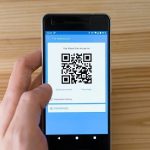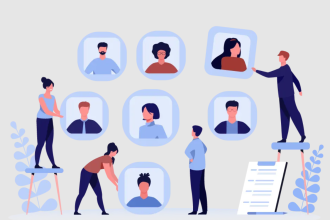Digital distractions are fast becoming a significant barrier to workplace productivity. Your staff members are often bombarded by constant notifications from social media, and non-work-related websites, which can significantly reduce productivity and focus.
Building a digital detox strategy can be a powerful way to create a more focused and efficient work environment while reducing workplace distractions. Let’s explore five effective tools you can implement in your business today to cut workplace distractions and foster a more efficient and focused work environment.
Scheduled Breaks from Screens
One of the best ways to improve the output of your workforce is to create and encourage scheduled breaks from all screens. Doing this helps your teams get rid of digital fatigue and screen overload, which helps them restore mental clarity, enhance productivity, and improve their general well-being.
Scheduled breaks have other benefits, too. They offer significant relief from the stress of constant notifications and digital stimuli, which reduces anxiety. Breaks also prevent eye strain and neck and shoulder tension from prolonged computer use.
Additionally, a scheduled break helps improve interpersonal relationships between your staff, enabling them to create meaningful and productive relationships with each other. So, what would that look like for your business?
Scheduled Break Recommendations
Research demonstrates that the human attention span operates in a natural cycle that lasts 90-120 minutes. Using this as a baseline, you can establish an optimal break schedule that varies based on work intensity and individual needs.
Here’s an example:
- Establish breaks every 52-75 minutes, following the 52-17 minute rule. This allows team members to get a 17-minute break for every 52 minutes worked.
- For teams with deeper work sessions, encourage breaks every 90-120 minutes. Doing this aligns with ultradian rhythms.
- Set a general rule for staff to take 5-10 minute breaks every 1-2 hours.
Website and App Blockers
Website and app blockers restrict your team from accessing specific websites or content categories during productive work periods. These tools intercept requests at the browser, device, or DNS level, preventing your staff from visiting non-productive or malicious websites or websites non-compliant with business policy.
Blockers are critical for reducing digital distractions and have multiple benefits. For instance, they reduce time wasted by your workforce on social media, streaming, and other interruptions, leading to more productivity. Website blockers also preserve network performance for critical business applications. They also improve your cybersecurity posture, preventing common phishing, malware, and ransomware attacks from unauthorized websites and downloads.
Although many browser extensions and desktop/mobile applications can block unauthorized apps, your best bet is a network-level filter that covers all devices on your network. Not only do these tools offer centralized management, but you can also create custom blocklists and set up per-user or per-group policies.
Time Management and Productivity Apps
Time management and productivity apps help individuals and team members in your business plan tasks, track time, and minimize distractions. Moreover, they can help your team collaborate better, reducing the overall workload and improving performance.
Some key functions of productivity apps include:
- Time Tracking and Analytics: This category of tools automatically tracks time spent on websites or applications, then categorizes activity by productivity levels. These tools can provide insights into the activities of your team members, helping you refine work habits and reduce mindless scrolling. Examples include apps like RescueTime.
- Task Organization and Planning: With these tools (like Asana and Todoist), you can create detailed to-do lists, set priorities, and add subtasks to key objectives. Moreover, you can break down workloads, distribute tasks across teams, and assign deadlines.
- Collaboration and Communication: Many productivity tools also support collaboration. They include features such as comments, file attachments, mentions, and shared workspaces. These tools (including Notion and Canva) can enable better coordination and reduce miscommunication.
- Integration and Automation: These tools enable multiple apps to integrate with your calendars, emails, and other work tools, streamlining workflows and automating repetitive actions.
Distraction-Free Environments
Another way to cut workplace distractions is to create an environment that fosters deep focus and reduces distraction from external factors. This has both physical and digital facets. Let’s explore them below:
Designate Separate Work and Relaxation Zones
Build a physical barrier between your working areas and leisure zones, which enables your teams to mentally switch between focused work and breaks. Let your working areas be quiet and clutter-free, with desk partitions and “Do Not Disturb” signs to minimize distractions. Where possible, offer staff members noise-cancelling headphones to reduce auditory distractions and background noise.
Conversely, ensure the play zones have comfortable seating, recreational equipment, and social spaces to encourage relaxation and team bonding. Leisure zones and lounges should be away from working zones to reduce potential disturbances that can distract or interrupt productive work.
Minimize Digital Distractions
Encourage team members to set their devices to silent or “Do Not Disturb” modes during focus periods. Also, designate uninterrupted time blocks during the workday when employees can focus solely on important tasks without meetings, calls, emails, or chats. Doing this creates an “invisible wall” of concentration that protects precious work hours from interruptions.
Additionally, encourage team members to respect colleagues’ blocked-out times and minimize unnecessary meetings which can take people out of productive cycles.
A Culture of Focus and Digital Wellness
Build a workplace culture that prioritizes focus and digital wellness as a critical feature. The best way to do this is to lead by example. As leader in your organization, model healthy tech habits, such as avoiding unnecessary meetings and respecting your employees’ focus time. Moreover, empower your employees to manage their digital habits proactively, allowing them to take full responsibility for their productivity.
Additionally, offer anti-distraction training to your staff. Doing this promotes activity-based working, which encourages your team members to choose their workspace based on task type. It can further enhance productivity and job satisfaction.
Final Word
Using these strategies as tools in your workplace can empower your team to improve their performance and reclaim their attention. It also reduces digital fatigue while helping your team create a healthier, more mindful relationship with technology.














